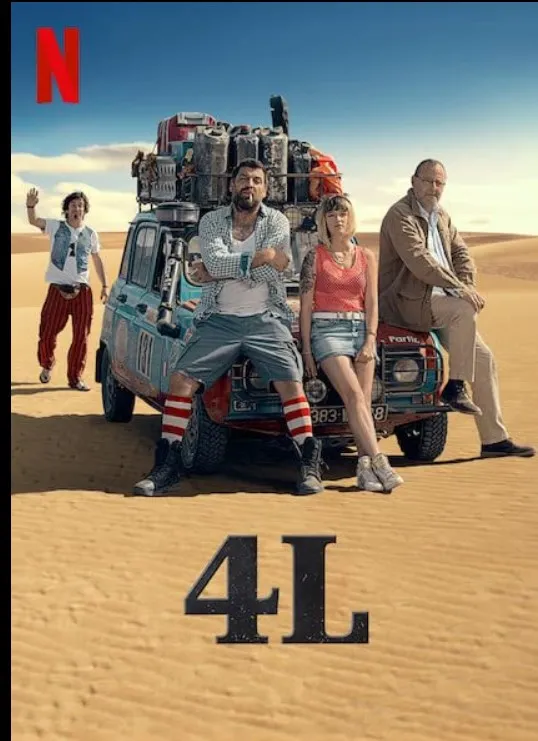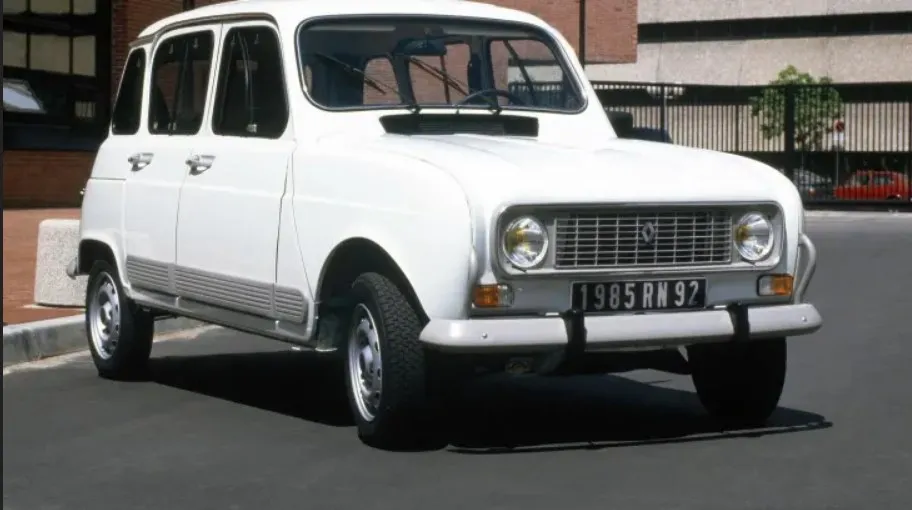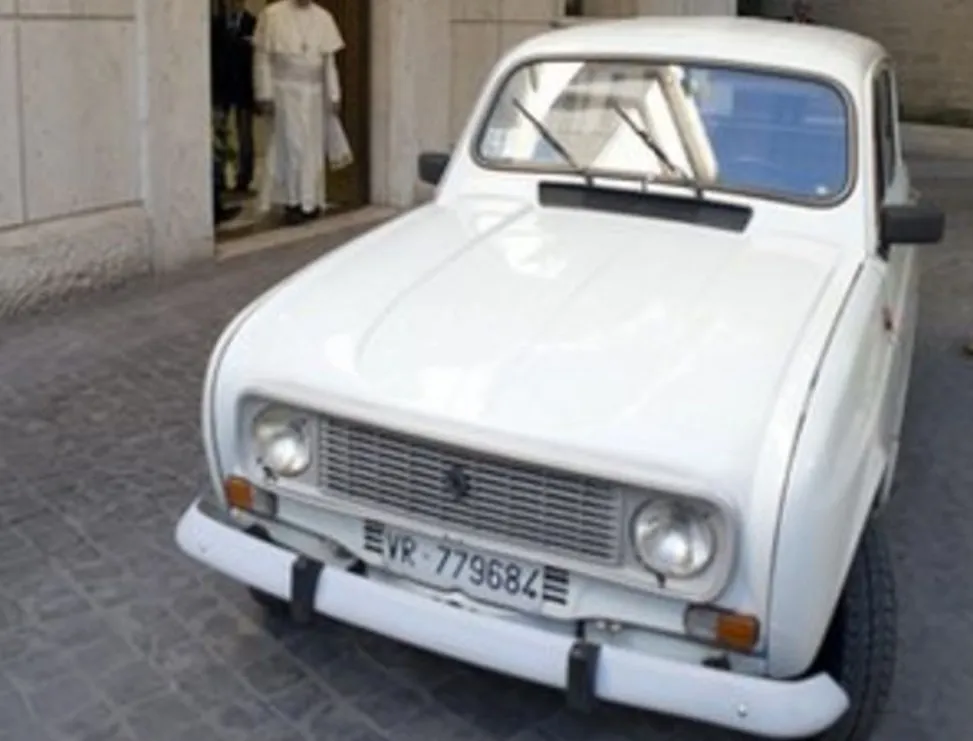
Cordial greetings to all the members of this new Community promoted by the OCD Incubation Program.
This is my first post in Planet Auto and I am not going to refer to the last contest promoted from it but specifically to a type of car I remember from my youth and a true simcolo in all Latin America.
But not only in LATAM it was a prestigious brand, synonymous with robustness, reliability and economy of consumption. It was present in many parts of the world. And the proof is the movie I saw not long ago in these times of pandemic where much of the time we spend zapping and looking for movies and series to pass the time.
Cordiales saludos a todos los integrantes de esta nueva Comunidad promovida por el Programa de Incubación de OCD.
Es mi primer post en Planet Auto y no me voy a referir al último concurso promovido desde ella sino específicamente a un tipo de auto recuerdo de mis años juveniles y un verdadero símcolo en toda Latinoaméerica.
Pero no solo en LATAM fue una marca de prestigio, sinónimo de robustez, confiabilidad y economía de consumo. En muchas partes del mundo estuvo presente. Y la prueba es la película que vi no hace mucho en estos tiempos de pandemia donde mucha parte del tiempo la pasamos haciendo zapping y buscando peliculas y series para pasar el tiempo.

The 4L a movie car.
Directed by Gerardo Olivares and starring Jean Reno I'm talking about 4 Cans, a comedy film included in the catalog of the Netflix platform in 2019.
As it could not be otherwise the title is quite explicit and refers to the Renault 4 (4L) car model, vehicle that makes central part of the plot.
It is an incredible journey from Europe (Spain) to Africa (Mali) of two friends who are going to meet another friend - terminally ill - in the company of a daughter he hardly knows.
The three of them -the friend's daughter and our two friends- embark on a journey as incredible as it is adventurous.
Where the central figure is always the 4L. With so much surrealism and irony. As when they find themselves in the middle of the desert with a broken 4L and out of nowhere appears a Japanese motorcyclist who after fixing the car tells them: "these are cars not like the Toyota of my country" in a criticism to the multinationals and a defense of the traditional cars and a little handmade of a time already (almost) forgotten. Or the encounter with a bus full of Tuaregs selling fallen satellites in the dunes. Or the harem of a mafioso in the middle of the desert.
It is a film, like all of Gerardo Olivares' films, in which adventure, love for life, for nature are mixed, where the message is a car: the mythical Renault 4L that gives the film its title, symbol and emblem of a thousand and one youthful chimeras, always ready for one last (almost) utopian chimera.

El 4L un auto de película.
Dirigida por Gerardo Olivares e interpretada por Jean Reno les estoy hablando de 4 Latas, una película cómica incluida en el catálogo de la plataforma Netflix en 2019.
Como no podía ser de otra manera el título es bastante explícito y hace referencia al modelo de automóvil Renault 4 (4L), vehículo que hace parte central de la trama.
Es un viaje increíble desde Europa (España) hasta Africa (Mali) de dos amigos que van a encontrar otro amigo -enfermo terminal- en compañia de una hija que casi no conoce.
Los tres -la hija del amigo y nuestro dos amigos- emprenden de esta manera un viaje tan increíble como aventuroso.
Donde la figura central es siempre el 4L. Con tanto surrealismo e ironía. Como cuando se encuentran en medio del desierto con el 4L roto y de la nada aparece un motociclista japonés que luego de arreglar el auto les dice: "estos son autos no como la Toyota de mi paìs" en una crítica a las multinacion ales y una defensa de los autos tradicionales y un poco artesanales de una época ya (casi) olvidada. O el encuentro con un autobus lleno de tuaregs que venden satélites caídos en las dunas. O el haren de un mafioso en pleno desierto.
Es una película, como todo el cine de Gerardo Olivares, en el que se mezclan la aventura, el amor por la vida, por la naturaleza, donde el mensaje es un auto: el mítico Renault 4L que da título a la obra, simbolo y emblema de mil y una quimeras juveniles, siempre dispuesto a una última quimera (casi) utópica.
A returning legend.
Recently the CEO of Renault declared that a "restylyng" of the 4L would return to the market under the name 4Ever and that it would begin production in 2025 as an electric car.
Trying to green old laurels with a nod to the past and a nod to the future. According to the new environmental standards that are slowly becoming more and more aware in the automobile manufacturing companies.
In fact, the name of the 4L was Renault 4 and it was marketed in more than one hundred countries for three decades with a record number: more than eight million units sold.
In a few months it will be sixty years since its official launch.
Exactly on August 28, 1961, after countless laboratory tests, thousands of kilometers of test drives and five uninterrupted years of development, it was officially presented to the press.
At just 3.6 meters long and 1.5 meters high, it had plenty of space for passengers and the trunk.
Especially the latter was included within the overall structure of the car that appeared in this way a little "square" with the trunk "hidden" unlike the cars of that time in which the trunk was an extension of the rear of the vehicle. Already at that time Renault was thinking about parking problems and the length of the cars that would become a major problem in Europe with space limitations.
Other innovations were the rear seat folding quickly and easily and a fifth door type gate, with a wide opening angle at the rear, unheard of at the time. Today it is a common feature in all cars, but at the time it was unknown.
But the technical revolution did not end there. It was the first model of the so-called "compact", which appeared on the car market since the end of World War II, to propose engine and front-wheel drive, that is to say we are talking about a period of more than fifteen years.
It had many other technical innovations not visible to the naked eye as for example the creation of an internal cooling circuit that through a special liquid was able to withstand the lowest temperatures without having to apply the classic antifreeze in the winter season.
Several features came together for an explosive growth in sales of the 4L: a rather small engine (845 cc) although powerful, quite low fuel consumption and an internal capacity far superior to that of other similar cars. With a speed within the standards of the time since it exceeded 100 km/h without difficulty.
In the following years the 4L was adapted to the technological innovations that the automotive market was producing. For example, a more powerful 1,100 cc engine, disc brakes, panoramic roof, etc.

Una leyenda que vuelve.
Hace poco el CEO de Renault declaró que un "restylyng" del 4L volvería al mercado con el nombre de 4Ever y que comenzaría a producirse en el año 2025 como auto eléctrico.
Tratando de reverdecer viejos laureles con un guiño al pasado y otro al futuro. De acuerdo a las nuevas normas ambientales que de a poco van tomando conciencia en las empresas fabricantes de automóviles.
En realidad el nombre del 4L era Renault 4 y se comercializó en más de cien países durante tres décadas con una cifra record: más de ocho millones de unidades vendidas.
Dentro de pocos meses se complirá sesenta años de su lanzamiento oficial.
Exactamente el 28 de agosto de 1961 después de inumerables ensayos de laboratorio, miles de kms de prueba recorridos y cinco años ininterrumpidos de desarrollo fue presentado oficialmente a la prensa.
Con apenas 3,6 metros de largo y 1,5 metros de altura tenía un gran espacio para los pasajeros y el baúl.
Especialmente este último estaba incluído dentro de la estructura general del auto que aparecia de esta manera un poco "cuadrada" con el baúl "escondido" a diferencia de los autos de esa época en los cuales el baúl era una prolongación de la parte trasera del vehículo. Ya en ese momento Renault estaba pensando en los problemas de estacionamiento y en la longitud de los autos que pasaría a ser un problema de suma importancia en Europa con las limitaciones de espacio.
Otras de sus novedades eran el asiento trasero rebatible de manera rápida y sencilla y una quinta puerta tipo portón, con un gran ángulo de apertura en la parte trasera, inédita en su época. Hoy resulta un aspecto común en todos los autos pero en esa época era algo desconocido.
Pero la revolución técnica no termina ahí. Fue el primer modelo de los llamados "compactos", que apareció en el mercado automovilístico desde el final de la Segunda Guerra Mundial, en proponer motor y tracción delantera, es decir hablamos de un período de más de quince años.
Tenía muchas otras innovaciones técnicas no visibles a simple vista como por ejemplo la creación de un circuito interno refrigerante que a través de un líquido especial era capaz de soportar las más bajas temperaturas sin necesidad de tener que aplicar el clásico anticongelante en la temporada invernal.
Varios características se unieron para un crecimiento explosivo de las ventas del 4L: un motor bastante chco (845 cc) aunque potente, consumos de combustible bastante reducidos y una capacidad interna muy superior a la de otros autos similares. Con una velocidad dentro de los estándares de la época ya que superaba los 100 kms/h sin dificultad.
En los años sucesivos el 4L se fue adaptando a las novedades tecnológicas que el mercado automotor iba produciendo. Por ejemplo un motoe más potente de 1.100 cc, frenos de disco, techo panorámico, etc.
The end of the legend.
Its end was decreed by the introduction of increasingly demanding international environmental regulations.
It is no coincidence that the latest models and in particular the "Clan" version - the last one to be released in 1993 - were produced in LATAM (Colombia) and Eastern European countries (Slovenia) where these environmental standards were still slow to be applied.
Even today, there are still standards regarding environmental pollution produced by engines applicable in Europe and not applicable in LATAM and other countries. Motorcycles are a clear example.
El final de la leyenda.
Su fin fue decretado por la introducción de reglamentaciones medioambientales internacionales cada vez más exigentes.
No es una casualidad que los últimos modelos y en particular la versión “Clan” -la última que salió en 1993- fueran producidas en LATAM (Colombia) y países del este europeo (Eslovenia) donde todavía estas normas ambientales tardaron en ser aplicadas.
Aún hoy hay normas relativas a la contaminación ambiental que producen los motores aplicables en Europa y no aplicables en LATAM y otros países. Los motociclos son un claro ejemplo.






